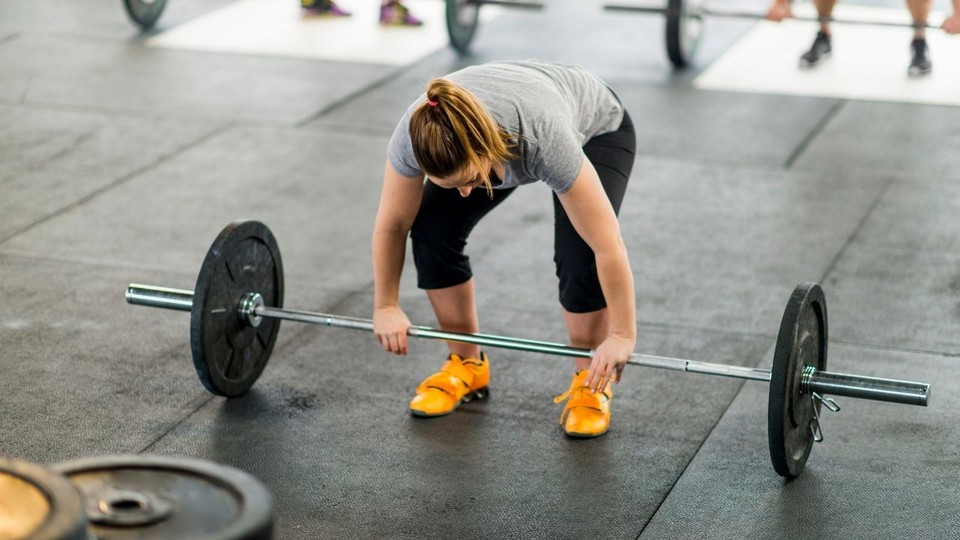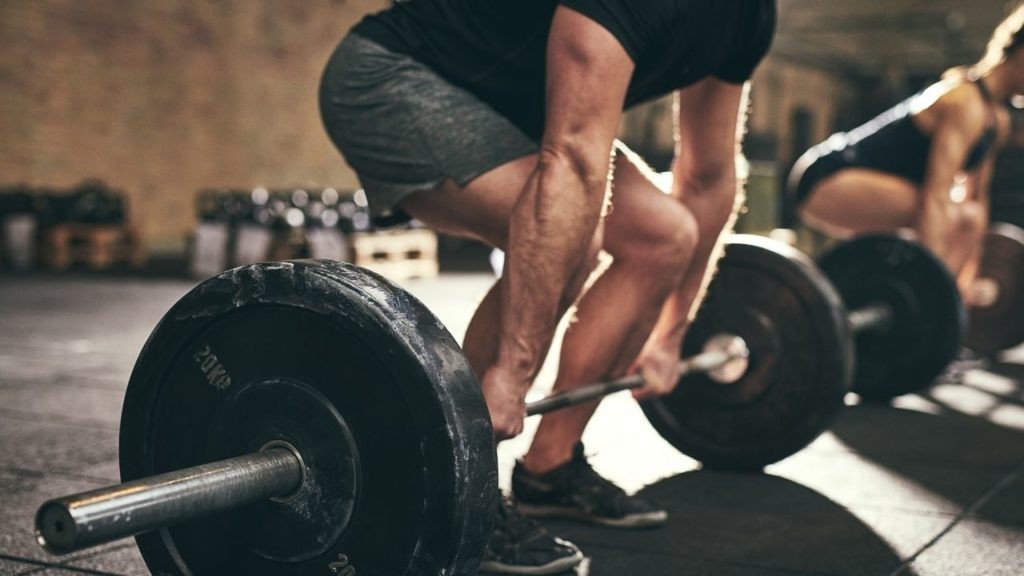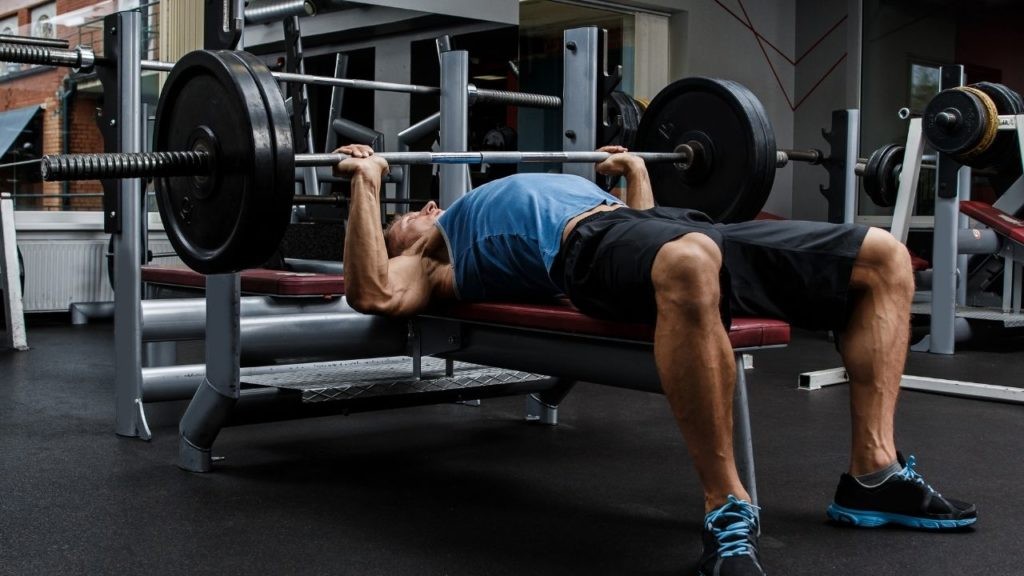
Whether you’re training for health and fitness, wanting to build muscle or build strength, or if looking for a new workout routine, there really is no better way to do it than lifting weights. Specifically, heavy weights. You can run on the treadmill and do as much cardio or bodyweight training as you like but at the end of the day, if you’re not pairing it with some weight training, your progress won’t be as fast or as significant.
The thing is, walking into the gym or weights room for the first time can be daunting, especially for a newbie. And, even if you’ve dabbled in bodybuilding or weight training, learning new moves and a new routine can be confusing. There are countless routines and programs out there – some free, and some that will cost you an arm and a leg.
So how do you know what’s a worthwhile strength training workout? And more importantly, how did you know if the workout program is actually any good and if it will give you the results and progress you’re seeking? Well, fear not. We’ve rounded up our four favourite weights lifting programs for beginners (and those who need to up the ante on their current routine). And the best part is, you’re doing cardio at the same time (and you don’t even know it).
What is Strength Training?
Before we get into the best weights lifting training plan for beginners, let’s talk about what exactly strength training is. Essentially, strength training involves lifting weights with the aim of increasing your full-body strength as much as possible.
A good strength training or weights lifting workout plan focuses on lower leps (e.g. four to six) but a heavier weights load. It also revolved around a few compound exercises. Compound exercises are some of the best exercises you can do as they involve moving multiple joints and muscle groups at once through a full range of motion. Examples of compound exercises include squats, deadlifts, overhead press, and bench press. Some programs will split up your workout days in lower body and upper body, but typically you’re working everything at once.
Weights lifting programs also allow for longer rest period to allow you to recover between each set. This is because the longer you rest, the more weight/reps/sets you’ll be able to fit into a session, which is the faster way to grow bigger and stronger. Decent rest between sets and exercises also helps you maintain better form, and reduces your risk of injury while improving performance too. Also, taking rest days is important for any good strength training plan.
The Key Features of a Good Weights Lifting Program
There are a few key features of a good weights lifting and strength training program, which include:
- Progressive overload (gradually adding more weight each session)
- The correct amount of volume and in the right places
- Frequency
- Solid rest periods between sets and workout days
So, without further ado, here are our top picks of the best weights lifting programs for begginers.
1. Starting Strength
Starting Strength is one of the most popular weight lifting programs around the world. It’s popular for plenty of reasons, but mostly because it’s suited to a variety of people with different training goals. For example, if you want to get strong, Starting Strength is the ideal program. However, it’s also ideal for adding muscle and improving fitness.
The Starting Strength program can be broken down into two workout days, Day A and Day B, with the entire body is worked each session. Here’s an example of phase 1.
Phase 1 (Usually 1-3 weeks)
| Day A | Day B |
|---|---|
| Squat 5 reps x 3 sets* | Squat 5 reps x 3 sets |
| Press/Bench Press 5 reps x 3 sets | Press/Bench Press 5 reps x 3 sets |
| Deadlift 5 reps x 1 set | Deadlift 5 reps x 1 set |
Progressing using this routine is easy. Each workout you add 2.5kg to 5kg to your barbell. Each phase also adds in a new exercise. Phase 2 introduces the Power Clean, while Phase 3 brings in Chin-ups.

2. StrongLifts 5 x 5
Strong Lifts 5 x 5 is a personal favourite of mine, and the program which I am currently following. It’s similar to the Starting Strength program and historically is based on Bill Starr’s 5×5. The original program was meant to improve overall athleticism but it quickly earned itself a name for developing whole-body strength too, especially for people who have either never lifted weights before, or found they were plateauing with their progress.
The StrongLifts 5×5 strength training program consists of two workout:
- Workout A: Squat, Bench Press, Barbell Row
- Workout B: Squat, Overhead Press, Deadlift
| StrongLifts 5×5 Week 1 | ||
|---|---|---|
| Monday – workout A | Wednesday – workout B | Friday – workout A |
| Squat 5×5 | Squat 5×5 | Squat 5×5 |
| Bench Press 5×5 | Overhead Press 5×5 | Bench Press 5×5 |
| Barbell Row 5×5 | Deadlift 1×5 | Barbell Row 5×5 |
It’s great for the time-poor, with just 3 training days per week. Most sessions you’ll be able to get in and out of the gym within 45 minutes to and hour. You alternative between Workout A and Workout B each time you train. This program requires one recovery day between workouts, and two recovery days after you’ve complete three workouts. So for example, you train Monday, Wednesday and Friday, and then have Tuesday, Thursday and the weekend off.
You rest between 90 seconds and 3 minutes between sets, depending on how hard it was for you to do 5 reps. To progress, each workout you add 2.5kg or 5kg to your barbell. Simples (and very effective). You will notice your strength increasing very quickly because you’re adding small but incremental weight each workout.
3. Push Pull Legs
The Push Pull Legs routine has been around for a while now but it remains one of the best weights lifting programs for beginners. Why this routine is so popular and effective is because each session trains all the major muscles groups and can easily be tailored based on your goals and experience. There isn’t just one single Push Pull Legs routine, but all the variations are broken down into three different workouts:
- Chest, shoulders and triceps
- Back and biceps
- Legs
A Push Pull Legs routine sees you train between 3 to 6 times a week, depending on how much you want to train and your experience level.

Here’s a good example of a Push Pull Legs routine from muscleandstrength.com. Below is the ‘Push’ day.
| Push Workout A | |||
|---|---|---|---|
| Chest, Shoulders & Triceps | |||
| Exercise | Sets | Rep Goal Total | Rest |
| Flat Barbell Bench Press | 5 | 15 | 90-120 sec |
| Flat Barbell Bench Press (Use 20% less weight than your previous working sets) | 1 | AMQRAP | N/A |
| Seated Behind the Neck Press | 3 | 25 | 60 sec |
| (Weighted) Tricep Dips | 3 | 30 | 60 sec |
| Standing Cable Crossovers | 5 | 50 | 30 sec |
| Seated Tricep Extensions (Dumbbell, Rope, or EZ Bar) | 5 | 50 | 30 sec |
| Seated Dumbbell Lateral Raises | 5 | 50 | 15 sec |
4. Jim Wendler’s 5/3/1 Routine
Jim Wendler’s 5/3/1 routine was one of the first strength training programs to become accessible and used by the masses because it perfectly sits in the middle of intense powerlifting programs with simple programs like StrongLifts 5×5.im Wendler’s 5/3/1 is all about starting with very light weights while progressing slowly and consistently. It’s based of the rep schemes 5, 3, 1, as the name suggests. Throughout the routine, you work with percentages based off of your max reps and work towards hitting personal records each workout. you will work with percentages based off of your max, and strive to hit rep PR’s each workout.
Like the other weights lifting programs, 5/3/1, revolves around compound exercises. It’s a simple 3 to 4 workouts each week, with most sessions lasting between 45 minutes to an hour. 5/3/1 is built around cycles, with each cycle consisting of 4 weeks. Each workout is focused around one core lift: Deadlift, Bench Press, and Squat. You will have rep-set goals for all of the major lifts each week.

Week 1: 3×5 (3 sets of 5 reps)
Week 2: 3×3 (3 sets of 3 reps)
Week 3: 3×5, 3, 1 (1 set of 5 reps, 1 set of 3 reps, and 1 set of 1 rep)
Week 4: Deloading (3 sets of 5 reps)
| Day 1 | Day 2 | Day 3 | Day 4 |
|---|---|---|---|
| Warm-Up | Warm-Up | Warm-Up | Warm-Up |
| Standing Military Press | Deadlift | Bench Press | Squat |
| Assistance Exercises | Assistance Exercises | Assistance Exercises | Assistance Exercises |
When choosing your beginning weights you must first know your maxes for the main 4 lifts. You then use 90% of your max for your first four-week cycle. For example, if you can do a maximum rep of 100kg squat, you’ll use 90kg as the base number for your weight training calculations. Here’s a more in-depth look at the science.
At the end of the day, starting somewhere is better than not doing anything at all. And, if you’ve never done weight lifting before, it’s always a good idea to have a training session with a personal trainer to familiarise yourself with different movements, proper form and so on so you don’t injure yourself.




